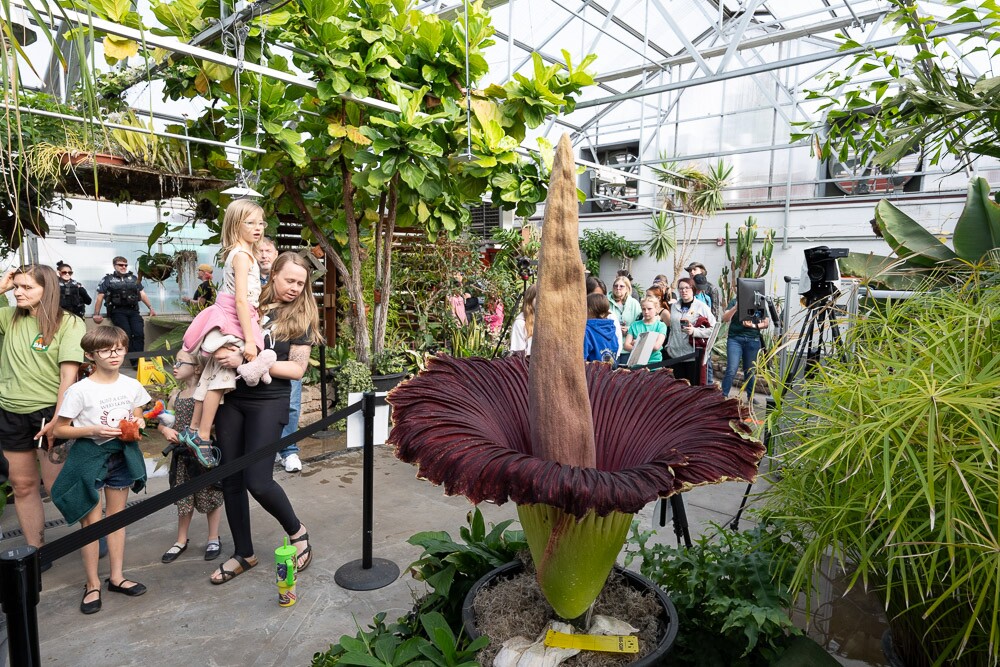FORT COLLINS, Colo. — A rare corpse flower bloomed for the first time in eight years at Colorado State University Saturday night.
Cosmo, the name of the corpse flower currently being housed at CSU’s College of Agricultural Sciences’ Conservatory, was slated to bloom either Sunday or Monday, according to CSU spokesperson Tiana Kennedy, but Cosmo bloomed a little bit earlier than expected.
A timelapse of Cosmo the corpse flower is now available for anyone to view.
The rare flower, Amorphophallus titanum, can grow up to eight feet tall and emits an odor that has been described as the smell of rotting flesh, garbage and an old gym bag. Viewing a corpse flower is a very rare event, as seven to 10 years can pass between each bloom.
Coloradans are able to get a whiff of the putrid smell this plant emits, but only for a very short time as the stench will become less pronounced after the first 12 to 24 hours.

Public viewings will happen at the Plant Growth Facility Conservatory at 1241 Libbie Coy Way in Fort Collins, from 9 a.m. to 3 p.m. each day the flower is in bloom.
CSU officials said the rare plant came out of dormancy around the beginning of May and while they were not expecting much action, it was its growth rate and the fact that it was shooting out stalks that made them realize “something really big was about to happen.”
“This is a rare occasion and a big deal because it will be the first bloom for the corpse flower here at CSU,” the university’s Plant Growth Facilities manager, Tammy Brenner, said Tuesday.

CSU officials said Cosmo the corpse flower won’t take that long to bloom again though, so all you curious amateur fragrance testers that can’t make it after it blooms this year should mark your calendars three to five years from now.
The corpse flower is native solely to western Sumatra, a large Indonesian island, where it grows in openings in rainforests on limestone hills, according to National Geographic.



